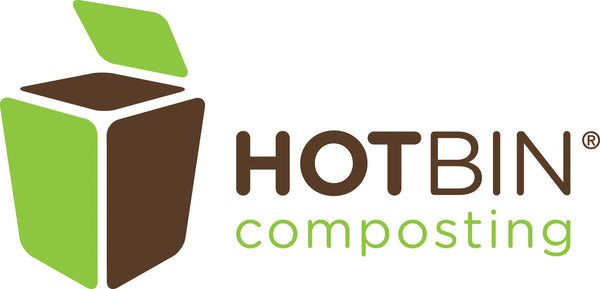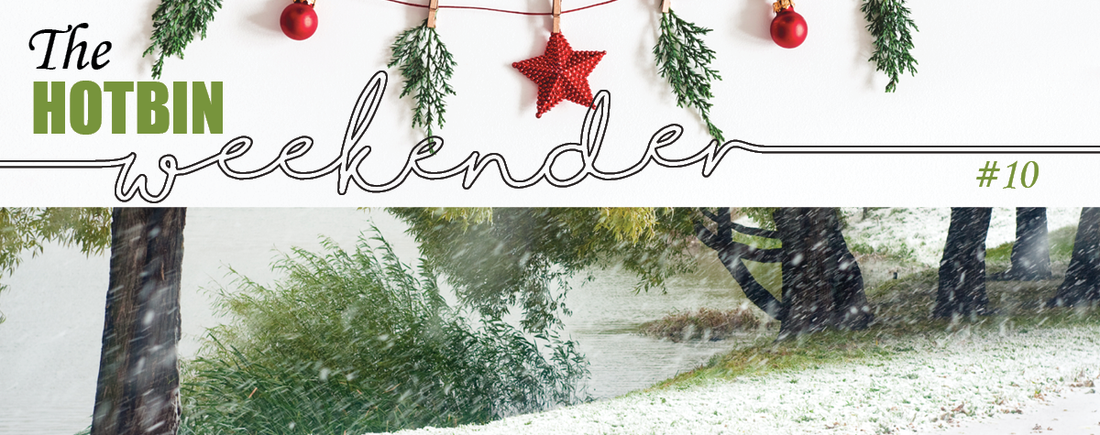Understanding how composting works can be considered a continuous learning experience as the composting heap inside a composting device not only depends on the device and the material it’s made of, but on all other variants such as the outside temperature, the type of waste and mix added, among some. This week, I am touching on the challenges we face when composting in cold weather and some tricks to tackle them. Also this week, How HOTBIN works, as knowing how your device works helps tremendously in determining how to successfully compost in cold weather. As always, I hope you find this week's publication relevant and useful.
Composting in Cold Weather
Here are some ways to make cold weather composting a success. Bacteria living in a hot composting pile thrive composting at 120-140 degrees. However, as outside temperatures drop and become colder, your compost pile can freeze until warm weather returns unless a plan is enacted. Here are some remedies to explore to continue composting all-year-round:
- Keep the carbon sources such as leaves and wood-chips dry. Wetness from rain and snow saturates food waste making it necessary to keep the moisture a good-moisture balance in your composting pile.
- Insulation – this is another important tool for protecting and maintaining the composting process going forward in cold weather. HOTBIN thick insulating walls provides the necessary insulation to keep the composting process going in winter.
- Freeze protection - Depending on the temperatures where you live, the proper carbon resources and insulation properties of your composting device, may not stand a chance to maintain its internal properties against the cold. In other words, too much heat is being pulled away when outside temperatures are as low as -10 to -50 degrees Fahrenheit. The recommended solution depends on a variety of factor such as the location of the device (I.e. exposed to windy conditions, etc.).
- Starting your compost pile in cold weather – is challenging as piles tend to become wet and cold. Although you can continue or keep your pile going if the internal temperatures are within parameters, re-starting it is more difficult. This is why it is recommended to start the composting process in warm weather, so that when the cold weather arrives, your composting pile is already hot and thriving! Also important… the larger the compost pile is, the more capacity it has for keeping and maintaining its internal heat at a desired temperature.
- NEW TIP/TRICK LEARNED: If you need to start a new composting pile during cold weather, one trick is to move the device indoors (I.e., garage, back deck against warm walls, etc. versus open field/areas), start a small batch of compost and move it outside once the compost temperatures have started to rise. By frequently monitoring temperatures, constantly adding batches of composting waste and keeping the carbon resources as dry as possible, your composting pile will be armed and ready for any weather.
How the HOTBIN Works
As the HOTBIN brand continues to make strides in the North American market, I find that going back to the technology behind our composter and explaining in simple terms how it works becomes useful to new and prospective customers. So here it goes… As waste is added to HOTBIN, heat is generated as a by-product inside the 1-inch insulated walls. To work, waste needs to be mixed with shredded paper to control moisture, and wood-chips (bulking agent) to create a structure full of air spaces. As air circulates and rises, it feeds bacteria the oxygen needed to start the decomposition process. Now loaded, the HOTBIN works as an insulated chimney with three layers, an upper hot active layer, maturing warm middle, and cool base. HOTBIN makes hot composting easy by maximizing what nature does naturally - essentially keeping bacteria happy. Click to view our video that better explains how HOTBIN works in 90 seconds!
My compost is too wet, what can I do to Tackle Excess Water?
It is essential for the composting bacteria to have water; but too much water in the HOTBIN will restrict airflow and the temperature can stall. Cold weather (as previously discussed) tends to bring too much moist to the composting waste. So, keeping a good balance is critical in winter.
To balance this moisture content, you should add shredded paper or corrugated cardboard every time waste is added to your bin.
Sometimes it can be a bit of a struggle to get the HOTBIN up to 140°F. One of the most common issues is that the waste is "too wet" for hot composting. In this post we explain what this means and how to fix it. The advice below might not match your past composting experience. Please stick with us, this advice works, it is based on the fundamental laws governing hot composting. Once grasped, you will find the HOTBIN easy to use for ever. Click to read the complete article.
7 Secrets of Good HOTBIN Composting
- Build the perfect base layer
- Chop and shred waste
- Add a mixture of waste
- Create airflow
- Tackle excess water
- Close the lid tightly
- Empty out the base layer every 3-6 months
Click to read complete article.
You can still buy your HOTBIN on time for Christmas Delivery. Place your order by December 15!
HOTBIN North America will be exhibiting at the Mid-Atlantic Nursery Trade Show, January 5-7 at Baltimore Convention Center Booth #2696

